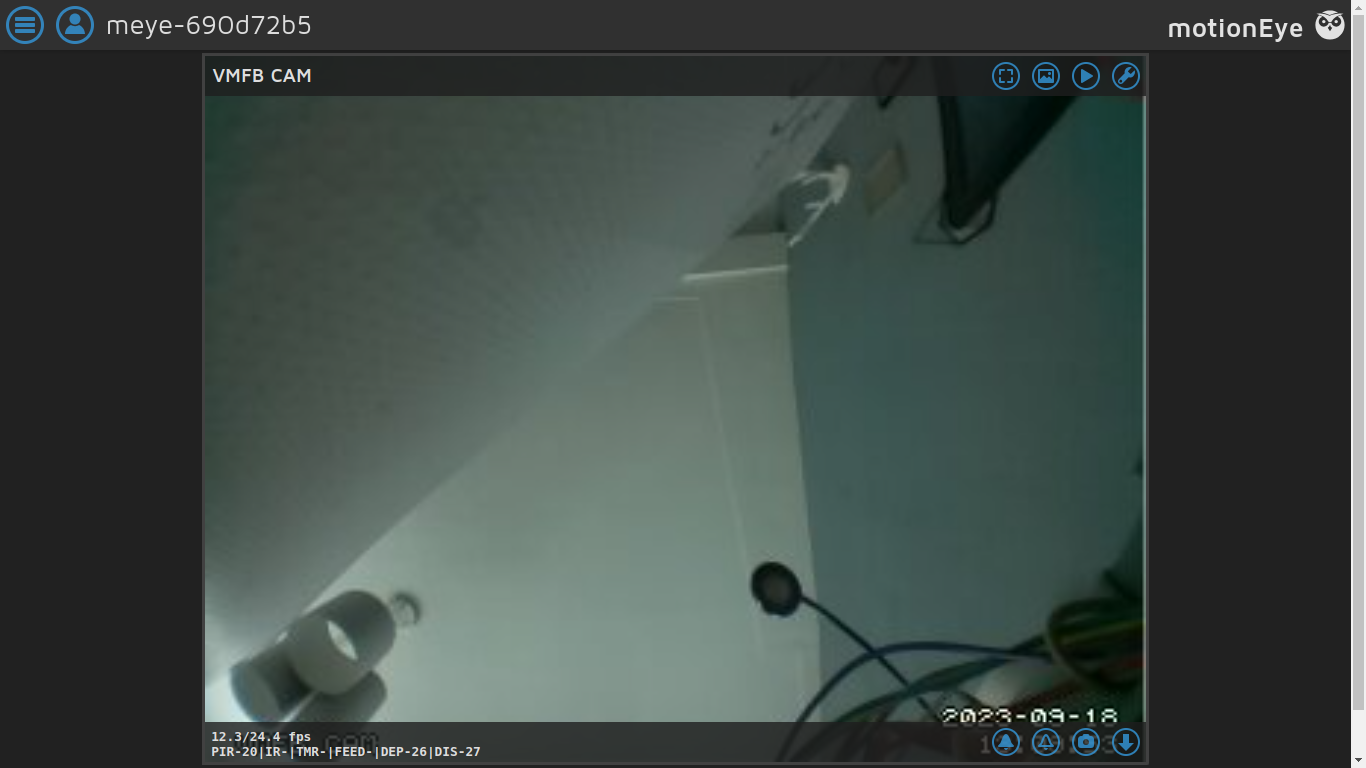I managed to enable/disable the camera based on a schedule, so I think I can wrap this part up. Power consumption while the sensors are idle and the camera is disabled is ~110mA. With the camera enabled it draws ~185mA. Streaming adds another ~35mA (~220mA with camera enabled and streaming).

To recap what's there so far:
Monitors
- PIR - state and # of times it was triggered today
- Sensor IR - state (on or off)
- Timer - state (on or off)
- Feed - state (ok or low)
- Deposit - state (ok or jammed) and # of times it was triggered today
- Dispense - state (ok or jammed) and # of times it was triggered today
Controls
- manual start and stop of recording
- manual dispensing of feed
- manual snapshot of still images
I removed the manual turning on of the sensors, as this is not super useful by itself, at least with my use case. I also removed the buttons to manually enable and disable the camera, as there is already a place in the UI to do this.
Logs
- All monitored events are logged with datetime stamps
- Vending machine logs are rotated daily
Recording
- records while the sensors are on (meaning a bird is triggering the PIR)
Power Saving
- camera is enabled at 6:00am and disabled at 6:00pm (on/off times are configurable) to save power overnight
Updated scripts are on GitHub. I also added a VMFB_timer.sh script you could use instead of the 555-based timer on the PCB.
So now I will add some documentation to GitHub on how to use these scripts with motioneye/motioneyeos and the PVC enclosure build.
I am feeling like I've hit the "feature-complete" milestone on this project - it's doing everything I want it to.
- Works as a vending machine for birds
- Runs sustainably off solar power
- Optional remote monitoring and control
Now I just need to get it back outside somewhere.
 Stephen Chasey
Stephen Chasey
Discussions
Become a Hackaday.io Member
Create an account to leave a comment. Already have an account? Log In.